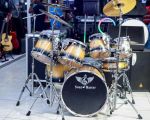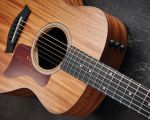Discover the Best Woodwind Instruments for Band Students
As a music lover and former band student, I know how crucial it is to choose the right woodwind instrument when you're starting your journey in a school band. Woodwind instruments are an essential part of any ensemble, offering a wide range of sounds that can enhance the music in countless ways. Whether you're a beginner or an experienced player, the woodwind section has a perfect instrument for you. In this article, I’ll explore the top woodwind instruments that are ideal for band students and provide insights on what to consider when selecting the right one for your musical journey.
1. Flute: The Bright and Agile Choice
The flute is one of the most popular woodwind instruments for band students. It’s light, relatively easy to start playing, and has a bright, clear tone that cuts through any musical arrangement. I personally began my musical journey with the flute, and it quickly became a favorite because of how quickly I could produce beautiful sounds. The flute is also versatile, with a range that spans from soft, delicate notes to bold, powerful sounds, making it an essential instrument in both classical and modern band performances.
One of the key advantages of the flute for beginners is its relatively simple finger positioning and lack of reeds. As a student, I found it easier to start producing a decent tone without needing to worry about reed maintenance, as you would with other woodwind instruments like the clarinet or saxophone. The instrument's light weight and portability also make it ideal for younger students or those just starting in school bands.
The flute's sound is bright and pure, and it’s often featured in the melody section of many band arrangements. It’s also quite adaptable, suitable for marching bands, concert bands, and even orchestras. If you're considering an instrument with easy accessibility and a beautiful sound, the flute is an excellent choice for new band students.
2. Clarinet: A Versatile and Rich Sound
The clarinet is another excellent choice for band students, known for its rich, warm sound and wide range. Unlike the flute, the clarinet uses a single reed, which gives it a deeper, more mellow tone. The clarinet has become a staple in concert bands and orchestras due to its versatile sound, making it an appealing choice for both beginners and advanced players alike.
For me, the clarinet was a fantastic instrument to pick up because it allowed me to explore a wide range of musical styles. The instrument can play both high and low notes with ease, and its distinct sound stands out in ensemble settings. As a student, I appreciated how forgiving the clarinet was in terms of tone production, though it does require regular maintenance of the reed. It’s an instrument that can be played in various styles, from classical pieces to jazz and contemporary music.
For those who are unsure about starting with the flute or saxophone, the clarinet offers a great middle ground. It’s a versatile instrument with a long history in both concert bands and jazz bands, so whether you're interested in classical music or something a bit more modern, the clarinet has you covered.
3. Saxophone: A Powerful, Expressive Instrument
The saxophone is one of the most exciting and expressive woodwind instruments, offering a sound that is bold and full-bodied. There are several types of saxophones, but for band students, the alto and tenor saxophones are the most commonly chosen. The saxophone’s rich, smooth sound is perfect for students who want to make a bold musical statement in any band setting.
One of the main reasons I recommend the saxophone for band students is its powerful presence in band music. The instrument has a wide range and can produce both mellow, lyrical passages as well as loud, energetic solos. Its key action is more similar to a brass instrument, and the way it projects sound makes it an attention-grabber in an ensemble.
The saxophone is also incredibly versatile and can be used in multiple genres, including classical, jazz, and contemporary music. Many band students find the saxophone to be fun to play because of its expressive qualities, allowing for a lot of room for personal interpretation. If you want an instrument with a big sound and the ability to add flair to your band performance, the saxophone should be at the top of your list.
4. Oboe: The Unique and Elegant Instrument
The oboe may not be as commonly seen in school bands as the flute, clarinet, or saxophone, but it’s still a top woodwind instrument that deserves attention. The oboe has a distinctive sound that is both sharp and penetrating, yet warm. It’s known for its unique timbre and is often used to add a sense of elegance to any musical piece.
I remember being captivated by the oboe's sound the first time I heard it in concert. It has a very specific and beautiful tone that stands out, especially in orchestral and band settings. However, the oboe is one of the more challenging woodwind instruments to learn, particularly because it uses a double reed, which requires a bit of finesse to produce a stable, clear sound. As a band student, you’ll need to invest time in learning how to properly maintain and replace the reed.
Despite its challenges, the oboe is a rewarding instrument for those who want to create a unique and expressive sound. If you’re someone who enjoys standing out in a band setting and playing intricate melodies, the oboe is a fantastic choice.
5. Bassoon: The Deep and Mellow Sound
While the bassoon is less common in many school bands, it is an incredibly unique and rewarding woodwind instrument to consider. The bassoon produces a deep, rich tone that adds depth to any ensemble. It has a wide range of pitches, from low, rumbling notes to higher, more agile passages. Because of its unique range, the bassoon often provides the harmonic foundation in concert bands and orchestras.
When I first heard the bassoon played live, I was amazed by how its deep, resonant sound filled the concert hall. The bassoon’s low register is particularly captivating, and it provides the band with a necessary contrast to the higher-pitched woodwinds like the flute and clarinet. However, it’s important to note that the bassoon can be more challenging for beginners due to its larger size and the complexity of playing with a double reed.
For students who have already learned a bit about woodwind instruments and are looking for a new challenge, the bassoon offers a unique musical experience. The instrument is ideal for those who want to contribute a deep, rich sound to their school band’s performance.
6. Choosing the Right Woodwind Instrument for You
Choosing the right woodwind instrument is a personal decision that depends on your musical interests, physical abilities, and commitment to learning. When I was a band student, I spent time exploring different instruments before making my final choice. Some students may find themselves drawn to the bright tones of the flute, while others may prefer the warm richness of the clarinet or the boldness of the saxophone. No matter which instrument you choose, it’s important to consider what kind of sound you enjoy and what will keep you motivated to practice and improve.
If you’re just starting out, it’s a good idea to consult with your band director or a music teacher. They can provide valuable insight into which instruments are best suited for beginners and which might align best with your musical style. It’s also a good idea to try out different instruments if possible before making your decision. Most importantly, enjoy the learning process, and don’t be afraid to experiment with different instruments until you find the perfect fit!








